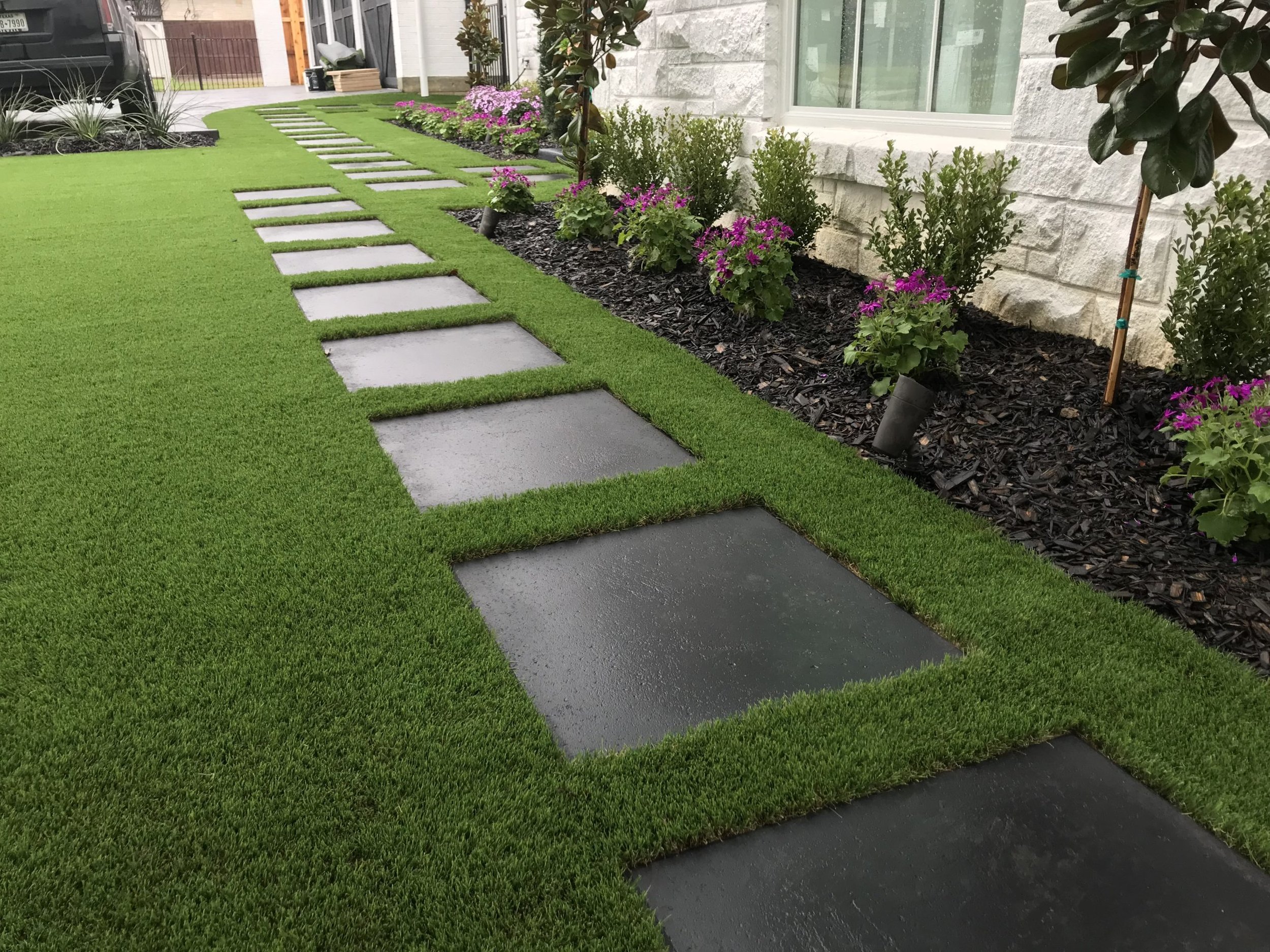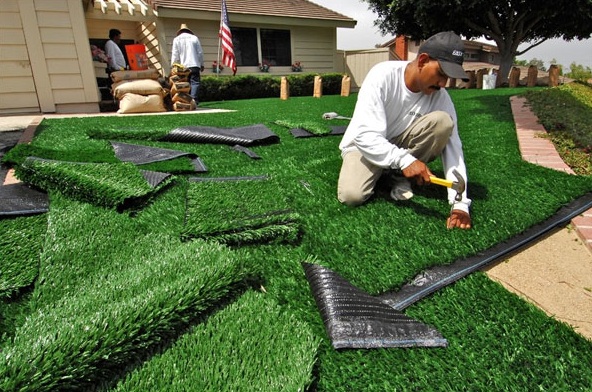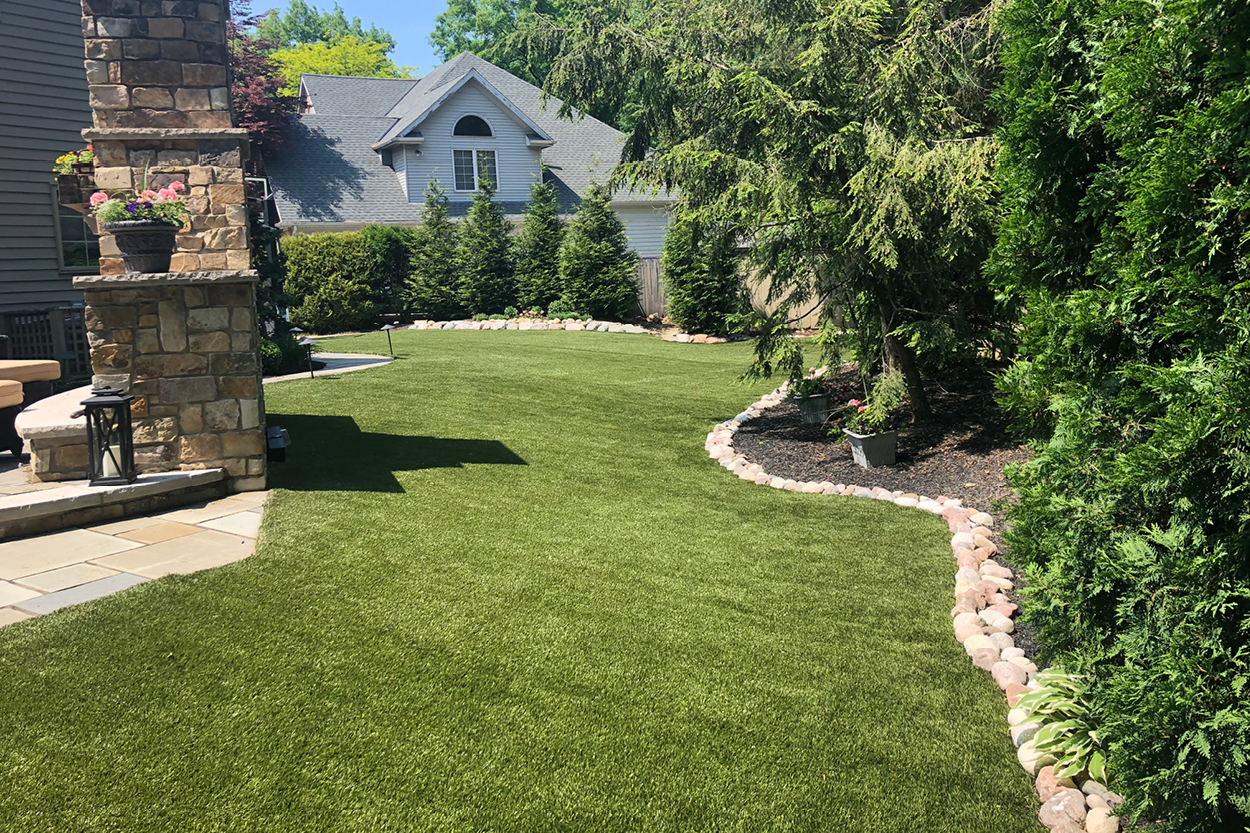Custom Turf Installation Phoenix AZ for Homes, Businesses, and Play Areas
Custom Turf Installation Phoenix AZ for Homes, Businesses, and Play Areas
Blog Article
Explore the Environmental Benefits of Opting for Artificial Turf Solutions
The adoption of man-made turf solutions presents a compelling possibility to deal with pushing environmental obstacles. By considerably decreasing water use and lessening the application of hazardous chemicals, these alternatives not only promote lasting landscape design however likewise safeguard neighborhood communities.
Water Preservation Conveniences
One of the most substantial benefits of man-made grass is its capacity to save water. In contrast, fabricated lawn does not require watering, significantly decreasing the total need for water resources.
By getting rid of the demand for routine watering, synthetic grass contributes to lasting landscape techniques and assists minimize the environmental impact of too much water usage. The conservation of water expands to the decrease of overflow, which can lead to dirt disintegration and waterway pollution.
Furthermore, the installation of synthetic turf enables home owners and communities to allot water sources a lot more effectively, concentrating on necessary usages such as alcohol consumption water and agriculture. The shift in the direction of synthetic grass not just promotes responsible water use however additionally straightens with wider ecological objectives targeted at preserving natural sources.
As communities significantly focus on sustainability, the water conservation benefits of synthetic grass offer a compelling situation for its fostering in household and business landscape design jobs.
Minimized Chemical Usage
The transition to synthetic grass dramatically lowers the dependence on chemical therapies typically made use of in natural lawn maintenance. Traditional grass administration commonly includes the application of chemicals, herbicides, and plant foods to advertise growth and control bugs. These chemicals can posture threats to human health, local wild animals, and the setting, adding to dirt and water contamination.
On the other hand, man-made lawn eliminates the requirement for these unsafe materials. Once mounted, it needs marginal maintenance, mainly being composed of regular cleansing and occasional infill replenishment. This reduction in chemical usage not just profits the immediate atmosphere yet likewise adds to broader ecological security. By minimizing the release of synthetic substances into the community, artificial turf promotes healthier dirt and water systems.
Furthermore, the absence of chemical runoff related to synthetic grass installments helps secure regional waterways from pollution, supporting water life and preserving biodiversity. Turf installation phoenix az. As communities increasingly prioritize lasting practices, opting for synthetic grass offers a sensible remedy that straightens with ecological preservation objectives. With this shift, homeowner can delight in lush eco-friendly rooms without jeopardizing environmental health, leading the way for an extra lasting future
Lower Carbon Impact

Moreover, the installation of synthetic grass can lead to substantial water conservation. Natural yards call for considerable quantities of water for watering, which not just contributes to the carbon impact related to water extraction and treatment yet also stress neighborhood water resources. On the other hand, fabricated turf needs very little maintenance, requiring no watering, thus significantly minimizing water use and its associated energy costs.
Furthermore, the long life of synthetic find here grass contributes to its decreased carbon influence. With a lifespan of up to 15 years or more, the need for frequent replacements is decreased, leading to much less waste and reduced power consumption in manufacturing and throwing away typical yard choices. In general, synthetic grass provides a sustainable option for environmentally conscious landscaping.
Environment Preservation
Habitat conservation is a critical factor to consider in the debate over landscape design selections, especially when contrasting artificial lawn to all-natural turf. Natural turf lawns frequently need comprehensive maintenance, consisting of using plant foods, herbicides, and pesticides, which can adversely influence neighborhood ecological communities. These chemicals can seep right into the soil and rivers, hurting native flora and animals and interrupting local environments.
Artificial turf gets rid of the demand for damaging chemicals, therefore protecting close-by wild animals and maintaining the honesty of bordering ecosystems. The installment of fabricated lawn can lead to the conversion of previous yard areas into more biodiverse landscapes, such as pollinator gardens or indigenous plant areas, which can support local wildlife.
Inevitably, the change to synthetic grass not only conserves water and lowers maintenance efforts yet additionally promotes a much more unified connection between human activities and the natural surroundings, promoting environment preservation while doing so.
Long-Term Sustainability
Long-lasting sustainability is a crucial consider reviewing the advantages of synthetic lawn over standard turf yards. One of the most substantial advantages of synthetic grass is its longevity; it can last as much as 15-20 years with marginal maintenance, whereas Arizona turf all-natural turf requires regular reseeding browse around these guys and replacement. This longevity decreases the demand for constant sources, such as water, fertilizers, and chemicals, which are necessary for maintaining a healthy and balanced grass lawn.
Furthermore, synthetic grass adds to a reduction in carbon discharges associated with grass care tools. Conventional yards typically call for gas-powered mowers, leaners, and blowers, every one of which contribute to air contamination. Artificial turf companies phoenix. On the other hand, synthetic grass removes the need for such devices, advertising a cleaner setting
Moreover, the manufacturing of synthetic grass progressively makes use of recycled materials, improving its sustainability profile. As suppliers take on eco-friendly methods, the ecological impact of synthetic grass remains to lessen.

Final Thought
The fostering of synthetic grass services presents considerable ecological benefits, including considerable water conservation, reduced reliance on dangerous chemicals, and a reduced carbon footprint. Additionally, fabricated lawn help in protecting natural habitats by decreasing land disruption and promoting lasting sustainability with making use of long lasting materials. Jointly, these aspects highlight the capacity of synthetic grass to contribute favorably to environmental wellness and offer a feasible option to conventional landscape design practices in a progressively resource-conscious world.
In contrast, artificial turf does not require watering, dramatically minimizing the overall demand for water sources. By lessening the launch of synthetic substances right into the ecological community, man-made turf advertises healthier soil and water systems.
Moreover, the installation of man-made turf can result in significant water preservation. In contrast, man-made lawn needs marginal maintenance, calling for no watering, thus dramatically decreasing water use and its connected power costs.

Report this page